DS-Alert System: DYMEX models for managing fruit fly incursions
DS-Alert System: DYMEX models for managing fruit fly incursions
Description
Process-based population dynamics models for three fruit fly species (Bactrocera dorsalis, Bactrocera zonata, and Ceratitis capitata). In the border biosecurity context these models can be used to support eradication and other incursion response efforts:
- Understanding the population drivers in different weather contexts.
- Testing different treatments (e.g. SIT, Mass trapping, Male annihilation technique, spraying).
- Estimating the cost of different management strategies
- Estimating the likelihood of success.
The models are extensible, to explore topics of interest to clients. Models can also be developed for other species.
We offer a consulting service, running bespoke simulations to suit client needs. We can even create detailed forecasts, linked to trapping or other biofixes.
Background
DYMEX (Maywald et al. 2007) models (version 4.1) were crafted to simulate process-based population dynamics of all three fruit fly species.
Understanding the population dynamics of a species is critical to identifying the lifestages that are more easily targeted for management. This understanding is necessary to support incursion response programmes. Models can help with decisions about which techniques to deploy, and when to deploy them, given the climatic context in which the incursion has occurred.
Bactrocera dorsalis: War Games
We demonstrate the capability of the modelling system using a set of simulations to explore how to manage an incursion of Bactrocera dorsalis. We added modules in the B. dorsalis DYMEX model to simulate impacts of releasing sterile males, as per sterile insect technique (SIT), and use of lure and kill traps to simulate the male annihilation technique (MAT). The model was run for Thessaloniki, Greece, using the ERA5 meteorological data. The model was run from 1 October 2013 to 28 October 2014. It was initiated with 1000 pupae on 1 May 2014, to simulate the introduction in late April of fruit infested with larvae, 1000 of which manage to pupate on 1 May.
Four simulations were run.
- The model was run with no management options, to obtain a baseline assessment of an introduction of B. dorsalis.
- MAT management was implemented for 2 months, using a 110-fold increase in trap efficacy from 1 June to 31 July 2014. These parameters were selected using Manoukis et al. (2019) on MAT against B. dorsalis in Hawaii.
- SIT management was implemented following a 2-month MAT program, with 20 000 sterile males released on 1 August 2014, with 7 repeats seven days apart (i.e., 20 000 sterile males released every week for 8 consecutive weeks).
- The final run used an SIT program of 10 000 sterile males released weekly for 8 weeks starting on 1 June 2014.
Results
The first simulation, with no management, indicates that an introduction of 1 000 pupae in May 2014 results in a population of around 4 million larvae between August and October, which has the potential to cause a large amount of damage (Figure 1). The first eggs are laid at the very end of May (Figure 2). However, climatic conditions are such that the B. dorsalis population becomes extinct by the end of December – it can only persist for the single season.
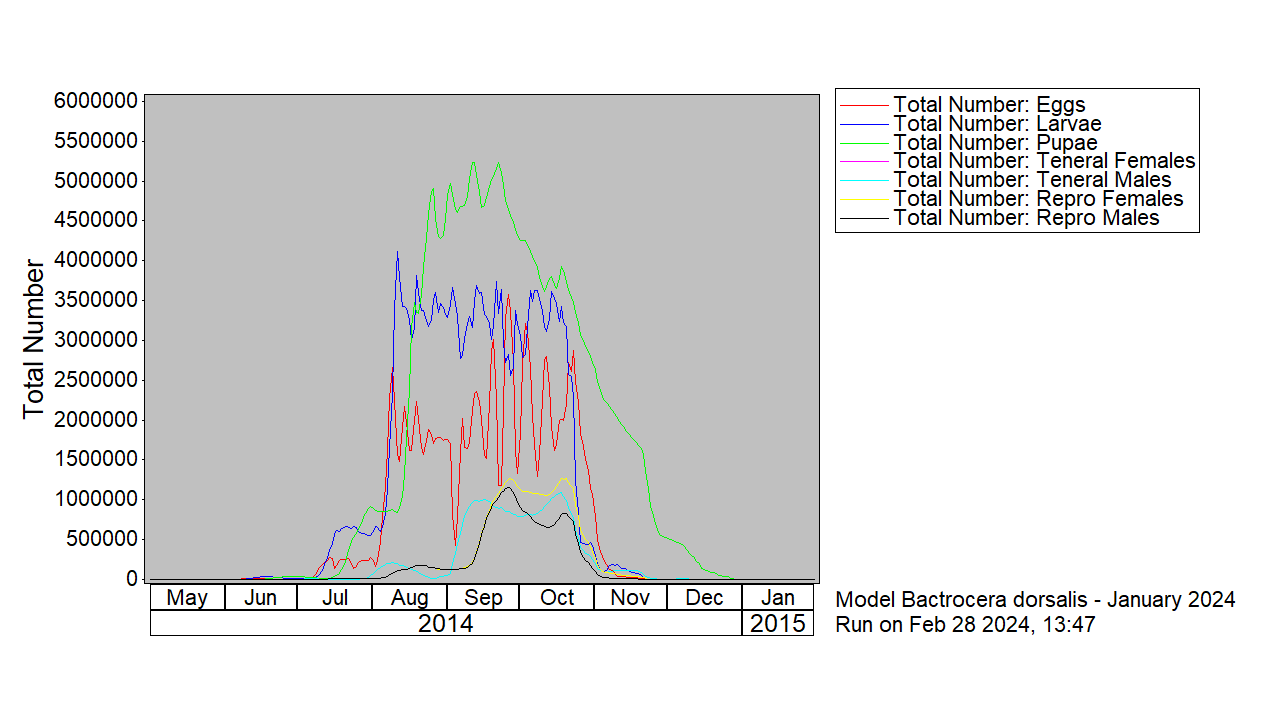
Figure 1. Population growth of Bactocera dorsalis with 1 000 pupae introduced 1 May 2014.
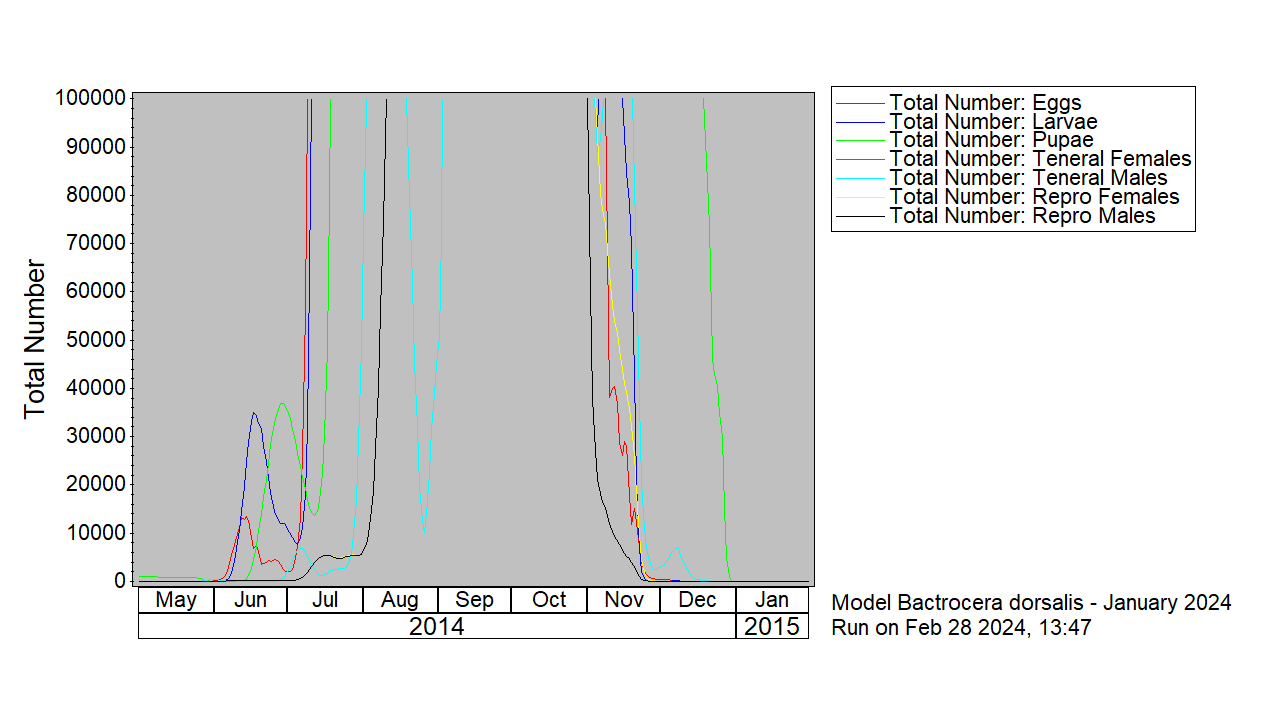
Figure 2. Population growth of Bactocera dorsalis with 1 000 pupae introduced 1 May 2014, with y-axis limited to show initial population growth in June.
The second simulation, using MAT for two months, starting on 1 June 2014, with a 110-fold increase in trap efficacy keeps the population growth suppressed for those first two months, but numbers of immature stages are still high as of September (Figure 3). The reproductive male and female populations are markedly reduced until the end of August (Figure 4 vs Figure 2).
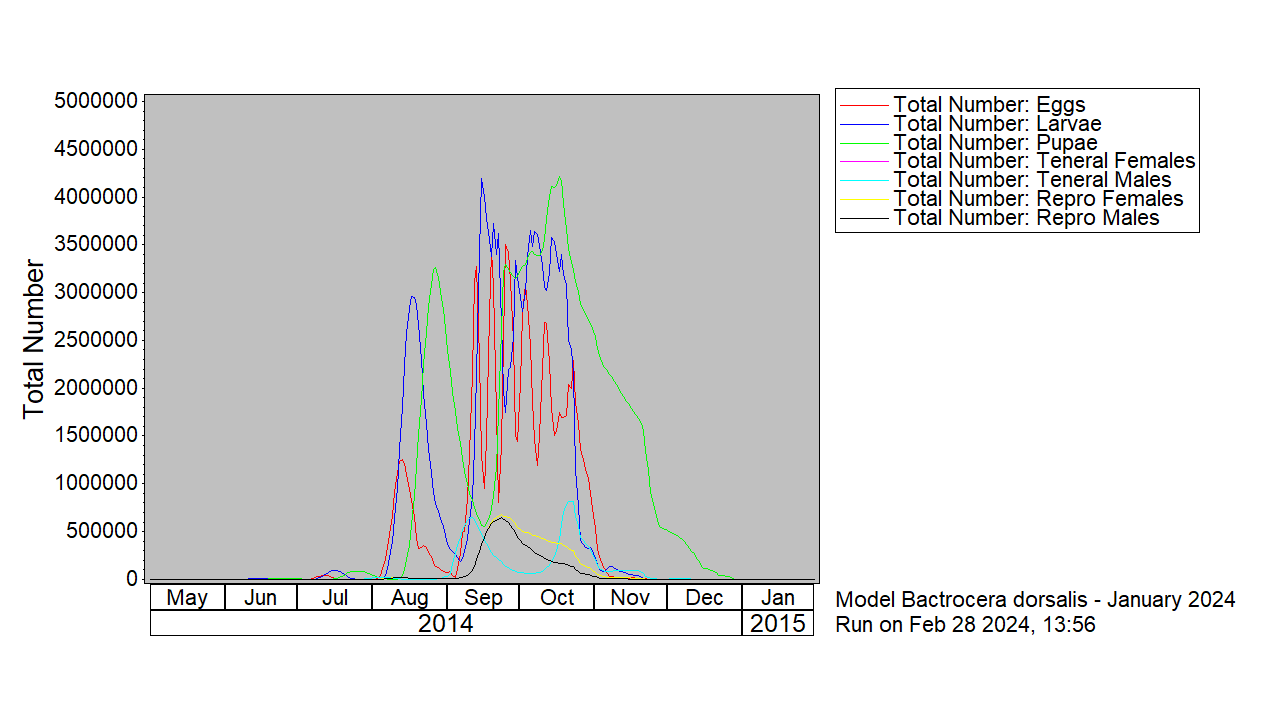
Figure 3. Simulation using MAT with a 110-fold increase in trap efficacy from 1 June – 31 July 2014.
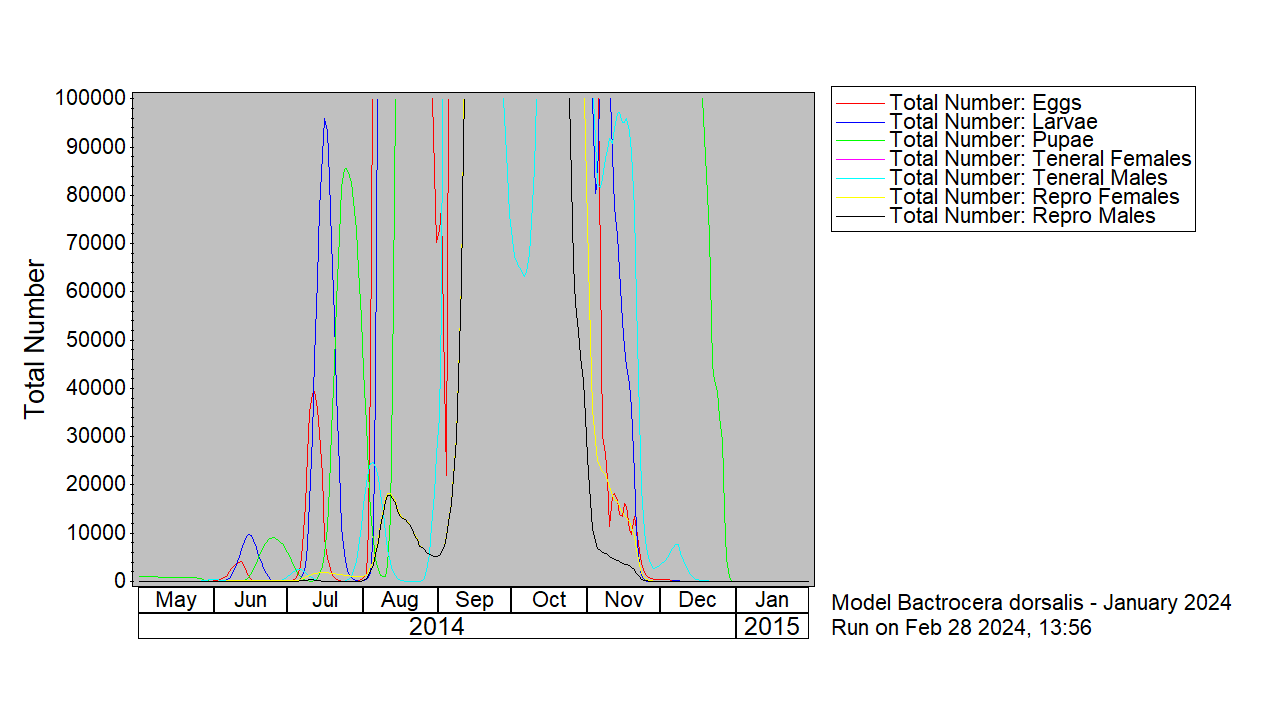
Figure 4. Simulation using MAT with a 110-fold increase in trap efficacy from 1 June – 31 July 2014, with y-axis limited to show the impact of MAT on reproductive males in July and August.
When a 2-month SIT program (releasing 20 000 sterile males for 8 consecutive weeks) is implemented immediately after the 2-month MAT program, population numbers are significantly decreased until September, although there is still the potential for similar levels of damage in September and October (Figure 5).
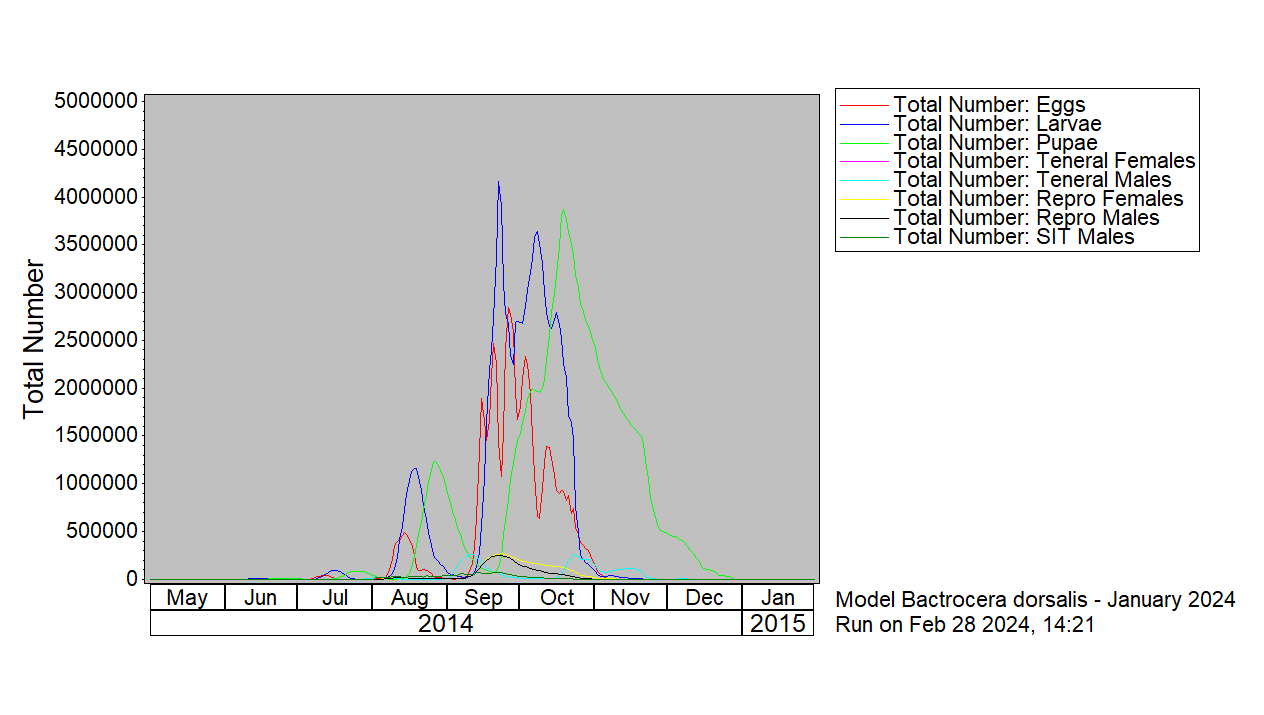
Figure 5. Simulation with 20 000 sterile males introduced for 8 consecutive weeks, starting on 1 August 2014 after MAT applied with a 110-fold increase in trapping efficacy from 1 June to 31 July.
The final simulation only implements SIT, with 10 000 sterile males released for 8 consecutive weeks, beginning on 1 June 2014. This simulation effectively controls the B. dorsalis population (Figures 6 and 7).
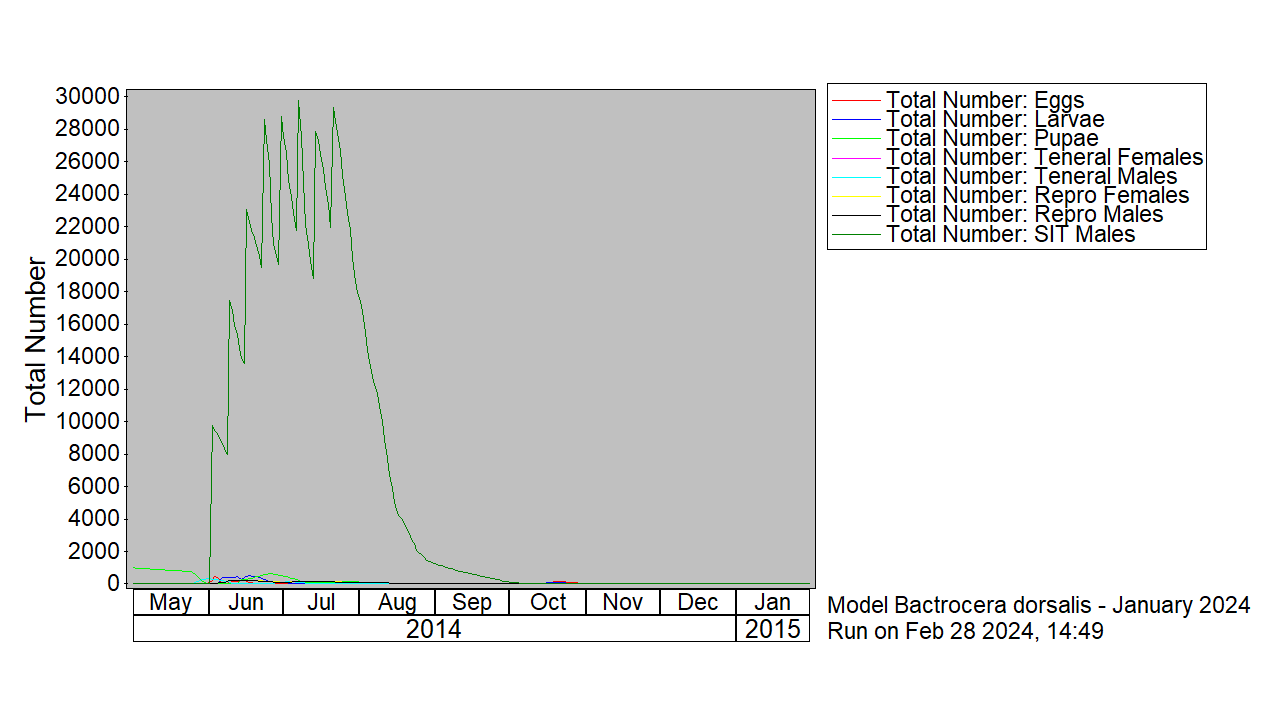
Figure 6. Simulation with 10 000 sterile males introduced for 8 consecutive weeks, starting on 1 June 2014.
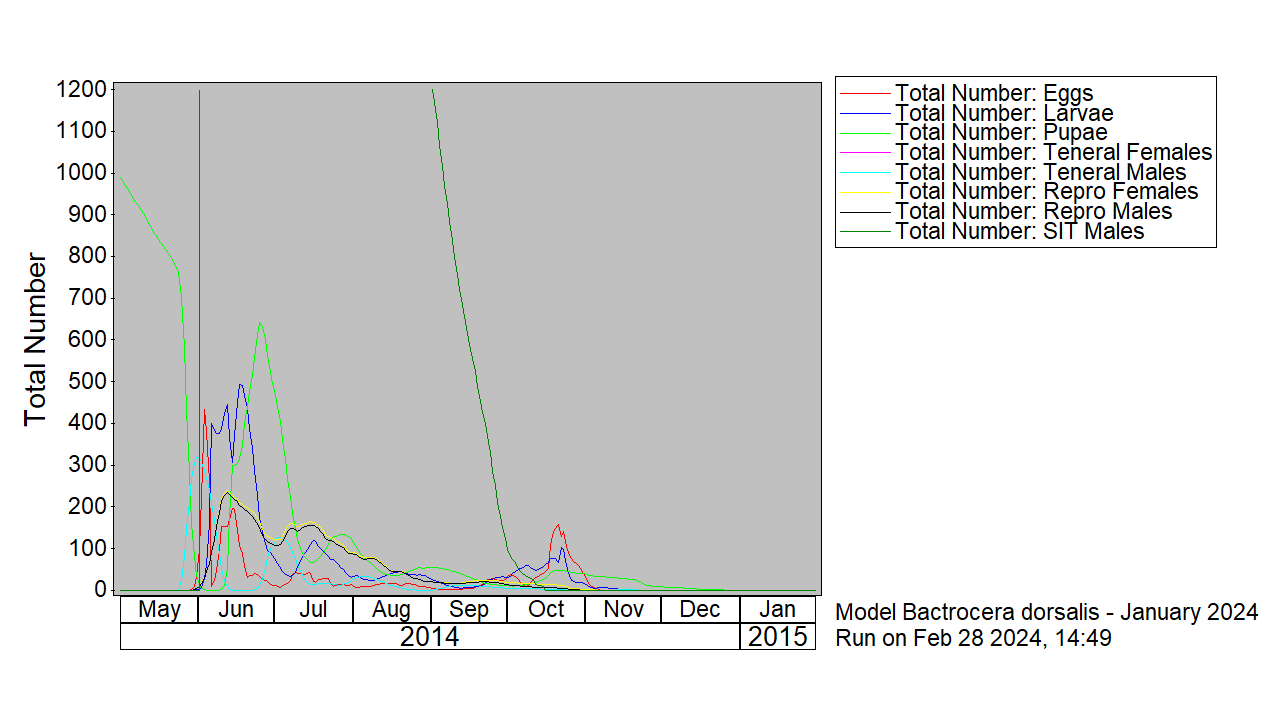
Figure 7. Simulation with 10 000 sterile males introduced for 8 consecutive weeks, starting on 1 June 2014, with y-axis limited to show the impact of SIT on total population numbers.
Model Comparison
The Bactocera dorsalis DYMEX model used above was modified so that egg and larval development and mortality functions could be driven by canopy temperatures and pupal development and mortality functions could be driven by soil temperatures rather than by standard air temperatures. There are minor differences in the resulting simulations, with pupal numbers being the most obviously different (Figure 8). Similarly, there were relatively minor differences in the simulation results when the new model was run with all the same management scenarios shown above.
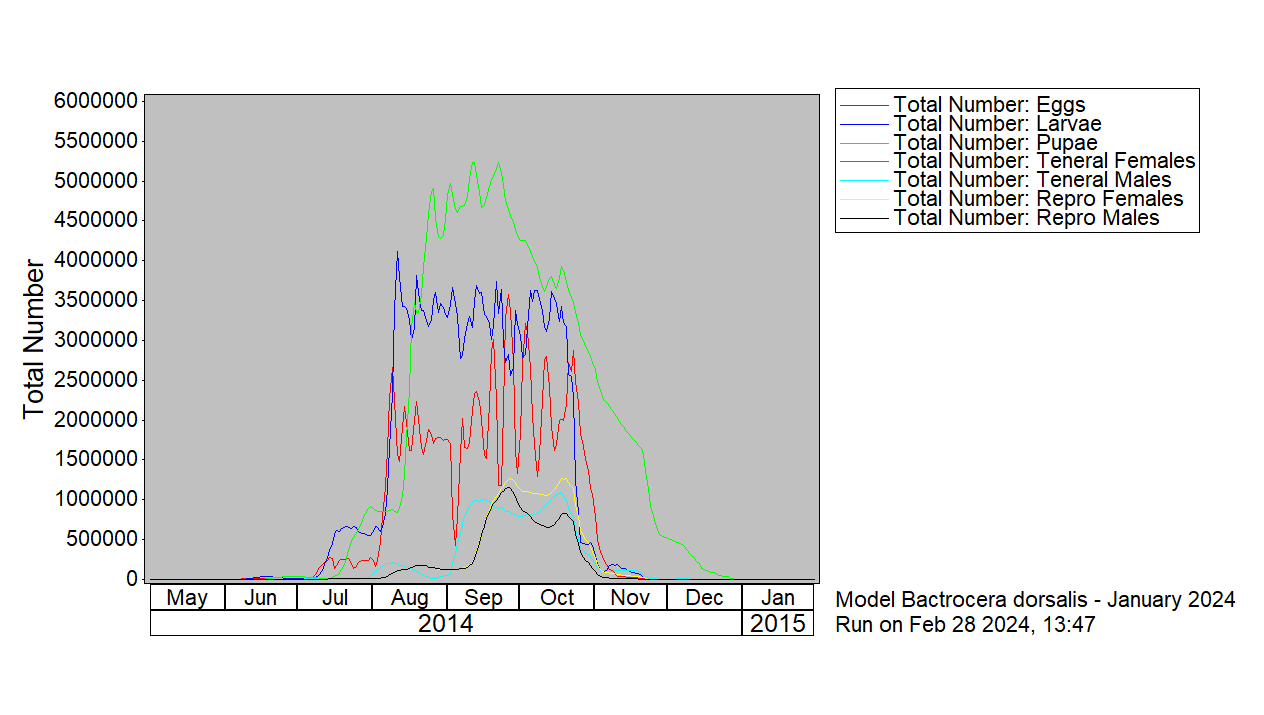
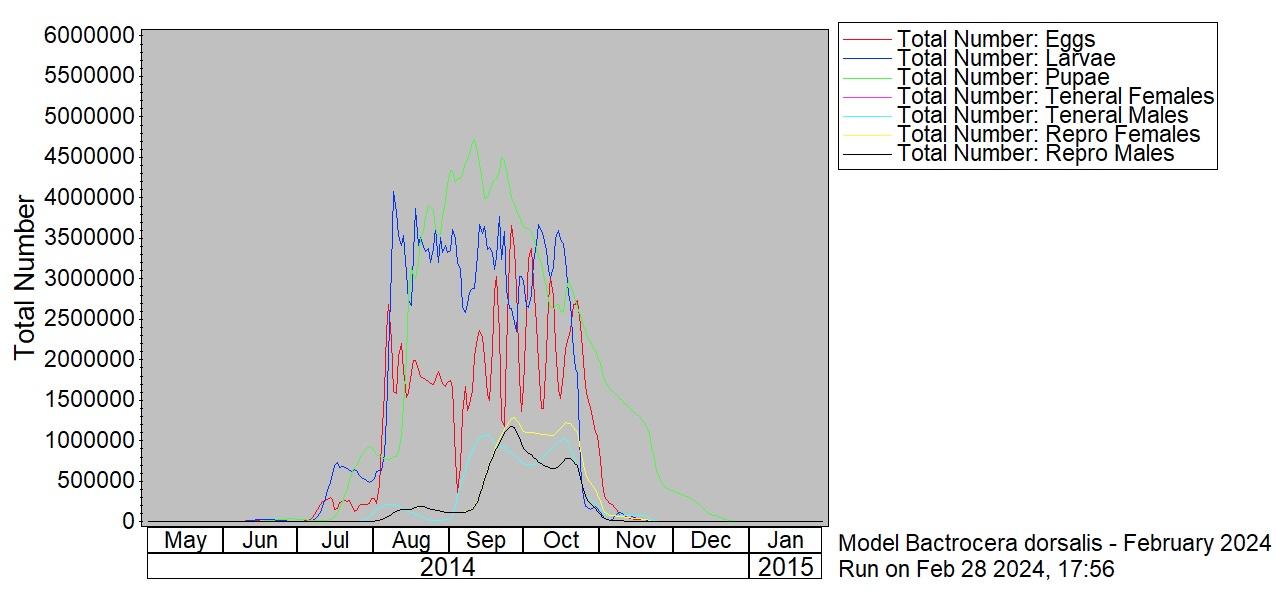
Figure 8. Simulations of Bactrocera dorsalis populations using air temperatures to drive all development and mortality functions (top) and using canopy temperatures to drive egg and larval development and mortality and soil temperatures to drive pupal development and mortality functions (bottom).
Discussion
These simulations indicate how models can be used to explore how to deploy management strategies. Although B. dorsalis cannot overwinter in Thessaloniki, it is nonetheless capable of rapid population growth (Figure 1), thereby potentially causing severe damage if it is accidentally introduced in the spring via infested fruit. The use of MAT for 2 months has some effect on population growth (Figures 3 and 4), but damage caused by B. dorsalis is still likely to be significant. The implementation of a relatively high-intensity 8-week SIT program (20 000 sterile males released each week) following the MAT program further reduces population numbers until September, yet still leaves significant numbers for the remainder of the season (Figure 5). A less intensive 8-week SIT program (10 000 sterile males released each week) initiated at the start of June was the only strategy that successfully managed B. dorsalis (Figure 6), keeping the numbers of all lifestages below 700, and numbers of eggs and larvae to below 500 (Figure 7).
Although only four simulations were run, the model could clearly be used to explore a variety of management options, to identify how best to prevent an accidental incursion from causing damage. SIT appears to be a better strategy than MAT. However, it would be possible to use the model to explore how to combine various strategies to optimise eradication before damage is incurred.
Whilst the two models produced similar results, the differences in pupal numbers in the two simulations (Figure 8) highlight that lifestages may be sensitive to environmental conditions, and it is important to model these as accurately as possible.
Pricing
If you are interested in applying these models to your situation or developing a DYMEX model for another species for you, running management scenarios or climate change scenarios or developing different products, please contact us here. For further information, please visit here
References
Maywald GF, Kriticos DJ, Sutherst RW, Bottomley W (2007) Dymex Model Builder Version 3: User’s Guide. Hearne Publishing, Melbourne.
Keywords
FF-IPM Developed, Tools, DYMEX, Population dynamics, War-games, Eradication, Incursion-response
Additional information
| Language | English |
|---|---|
| Person Responsible | Darren Kriticos, Eleni Verykouki, Anna Szyniszewska and Tania Yonow |
| Document(s) |
Reviews
There are no reviews yet.